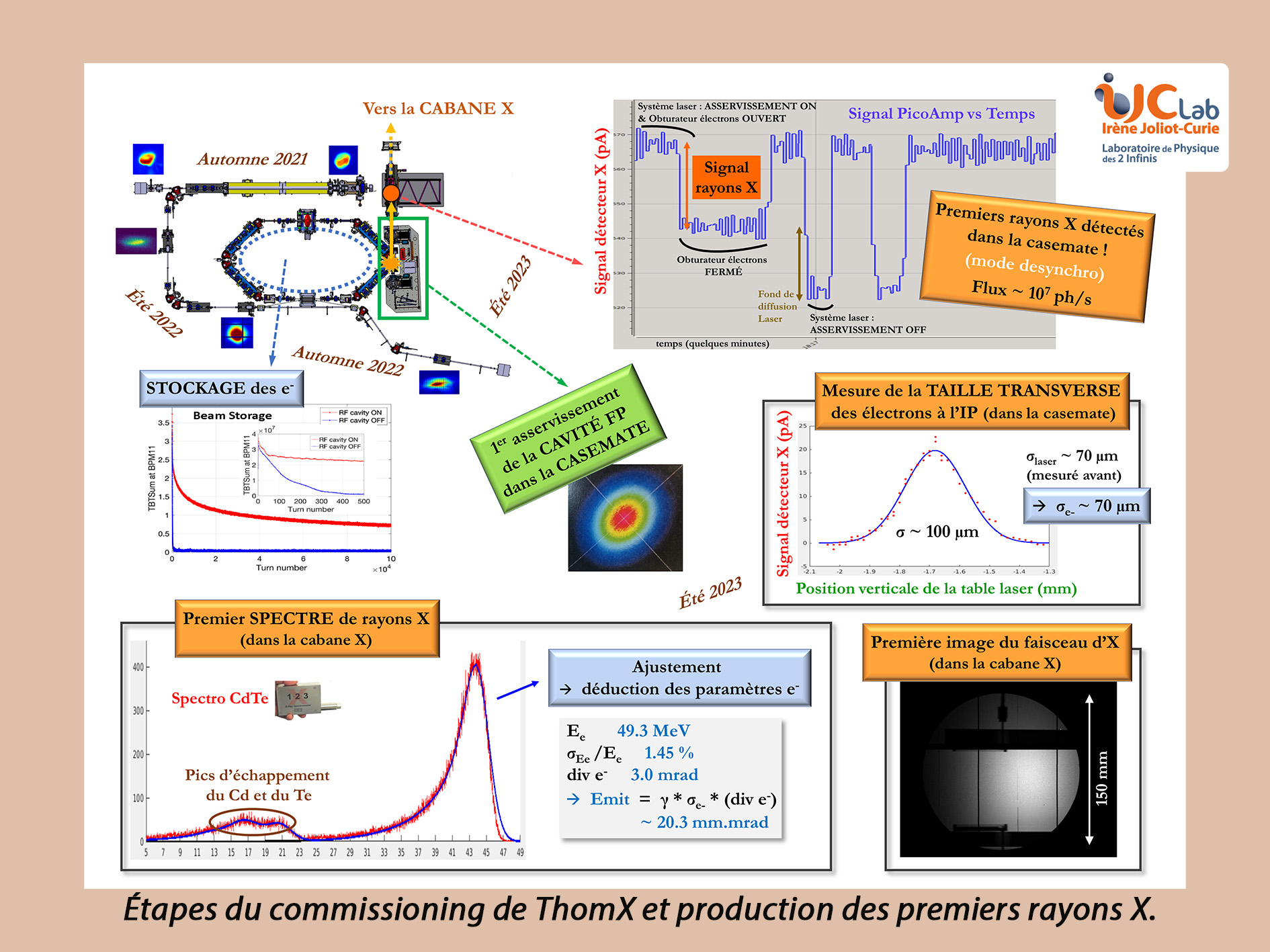
Compact Compton sources are machines of modest size (~ 100 m2) capable of providing a quasi-monochromatic X-ray beam of high flux and a brilliance several orders of magnitude greater than those of conventional laboratory sources. Compton X-rays are generated by the interaction of a bunch of electrons and a laser pulse. With the development of this type of source, numerous experiments carried out today only with synchrotrons in the fields of medicine (imaging and therapy), biology, cultural heritage (studies and preservation) or industry could be carried out within a laboratory, a museum or a hospital. The ThomX project, commissioning of which began in May 2021 at IJCLab, is a demonstrator of such a source: it aims to produce, ultimately, 1012-1013 ph/s with a brightness of 1010-1011 ph/s/mm2/ mrad2/0.1% bw, in the energy range 45-90 keV. To achieve these performances, the electron bunches and the laser pulses must be stored respectively in a storage ring and a very high gain Fabry-Pérot cavity.
Since May 2021, we have obtained major results: in the fall of 2021, we produced the first electron bunches (100 pC, 50 MeV) at the Linac output; in the summer of 2022, we injected into the ring then made a complete revolution; in the fall of 2022, after conditioning the RF cavity of the ring, the storage of the electrons was successfully carried out (> 300,000 revolutions) then the passage into the extraction line. Finally, in the summer of 2023, the Fabry-Perot cavity was controlled in the difficult environment of the accelerator and we produced the first X-rays, measured the size of the electrons at the interaction point by X-ray detection, recorded and adjusted a first spectrum and acquired a first full-field image of the beam.
These results are a big step for the project. This first Compton beam was produced in desynchronized e-/laser mode, the flux is ~ 107 ph/s. The implementation of synchronization and the increase in the power stored in the Fabry-Perot cavity should quickly make it possible to obtain ~ 1010 ph/s and move on to the qualification phase of our source/detector systems and the implementation first demonstration experiments.























